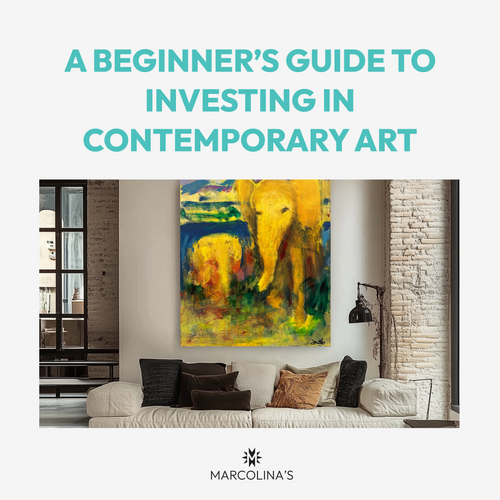Remember back to the first time you stood in front of a piece of art and felt something stir inside you. You know that art is more than decoration. You’ve felt it. But art can also be appreciated beyond its aesthetic allure. It also holds real investment potential - making art both an emotional and financial asset. While investing in art may seem intimidating, it doesn’t need to be. With the right mix of curiosity, patience, and strategy, building your very own art collection can be a journey as rewarding as it is enjoyable.
- Get to Know the Scene Think of art as a language—you need to immerse yourself to truly understand it. Start by visiting galleries, local art shows, and museums to find what speaks to you. Join art communities. Whether it’s chatting with gallery owners or joining online art forums, these connections can provide invaluable insights and help you feel part of the art world. Follow art trends. Keep up with art publications, blogs, and social media accounts of artists and curators. This will give you the awareness of who’s making waves and about emerging styles.
- Set Your Budget (and Stick to It!) Here’s some good news: you don’t need a trust fund to start collecting art. Buy what you love - if it goes up in value over time, consider that a bonus. Many people start with smaller pieces such as prints or works on paper. The important thing is to be realistic about what you can afford and understand that art is predominantly a long-term investment.
- Why Invest in Contemporary Art? Diving into the world of contemporary art can feel like stepping into a maelstrom – a kaleidoscope of color, emotion, and story - pushing boundaries and exploring new ideas. Created from the late 20th century onward, contemporary art is much more financially accessible to those just starting a collection.
- Seek Out Emerging Artists One of the most exciting parts of collecting contemporary art is discovering new talent. They often create fresh and daring work. Because they’re at the start of their careers, emerging artists’ works are usually more affordable. In getting to know the scene, look for signs that an artist is on the rise: representation by known galleries, participation in group shows, or recognition in art publications.
- Make Sure It’s Authentic Verify the authenticity of a piece by asking for certificates of authenticity, researching the provenance (the piece’s ownership history), and checking for the artist’s signature. If in doubt, reputable galleries and auction houses can help ensure you’re buying the real deal. There’s nothing worse than finding out that a prized piece isn’t what it seems.
- Embrace the Digital Age Digital art and NFTs (non-fungible tokens representing a unique asset) have become a major part of the contemporary art landscape. While this space comes with its own set of rules, it offers exciting opportunities. NFTs, in particular, are backed by blockchain technology, which makes ownership and authenticity easier to verify. That said, approach digital art as you would any other investment—do your homework and be aware of its highly volatile nature.
- Protect Your Collection Now that you have it, you’ll want to keep it in great condition. This means proper framing or presentation, keeping out of direct sunlight, and controlling temperature and humidity. Think of your art like a living part of your home—it needs care. And don’t forget insurance; it’s a small price to pay for peace of mind.
- Enjoy the Process The most important part of collecting art is that it brings you pleasure. Remember that first time. Don’t buy something just because you think it might be valuable one day. Choose pieces that speak to you, make you think, or bring a smile to your face. Art should be about enriching your life not just your bank account.
Final Thoughts: Investing in contemporary art requires finding a balance between your head and your heart. It’s about the thrill of discovery, the satisfaction of building something unique, and the hope that you’re nurturing a collection that will grow in both emotional and financial value. Start small, stay curious, and don’t forget to savor each step of the journey. You’re not just buying art—you’re preserving stories, ideas, and pieces of culture.

